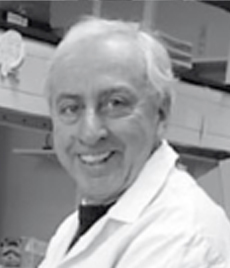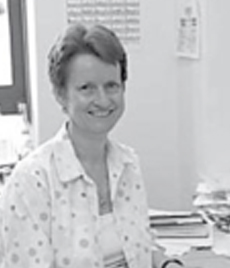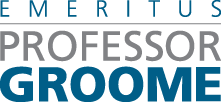Research Achievements
1
REF2021: Anti–Müllerian hormone (AMH): from novel antibodies to routine clinical immunoassay tools in worldwide use
REF2021: Second-generation Inhibin B biomarker assay: impact on male fertility testing and diagnosis and monitoring remission of ovarian granulosa cell cancer
2
Developed the first clinical research immunoassays for inhibin A, inhibin B, inhibin pro alpha c, activin A. The key assays are widely used commercially and provided the technology behind Brookes University’s first spin-out company Oxford Bio-Innovation.
https://emeritusprofessorgroome.uk/wp/wp-content/uploads/2016/04/OBI.pdf
This was sold to a US diagnostic company in 2001 for around £1 million.
3
I am coauthor on 320 refereed scientific publications listed in the web of science database. For publications in the period 1993-2003 I was in the highest 0.1% for cited authors in clinical medicine. In 2009 a published analysis of European authors in the field Reproductive Biomedicine placed me 4th out of all authors for citations to published work and I had the second most cited paper overall (First inhibin B assay). Almost of these papers used as key reagents the novel antibodies from our laboratory at Oxford Brookes University.
https://emeritusprofessorgroome.uk/wp/reproductive-biomedicine/
4
Google scholar shows that over my career as of 2016 over 50 of my publications had been cited more than 100 times.
https://scholar.google.co.uk/citations?user=ARgk6zwAAAAJ&hl=en
These photographs are of the most cited european authors in reproductive medicine of the period 1993-2003.

John Sumpter (1.)

Niels Skakkebaek (2.)

A. van Steirteghem (3.)

Nigel Groome (4.)

Eberhard Nieschlag (5.)

Carlos Simón (12.)

Philippa Saunders (18.)

Outi Hovatta (23.)
5
https://scholar.google.co.uk/citations?user=ARgk6zwAAAAJ&hl=en
The h statistic based on citation data is an indicator of the impact of a scientists work on the field and related fields.
For NP Groome
This article helps to understand what is a good H-index for a Professor in the life sciences.
6
Successful licensing of many antibodies and assays with total royalty income to Brookes around 3 million UK pounds in 2017. Royalty income has increased steadily year on year since 1996 when the first inhibin assay was sold.
7
Widely recognised as responsible for major developments in the understanding of aspects of human reproduction relevant to inhibin. A and B.
8
Assays from our laboratory provide routine tools for prenatal screening and infertility investigations in laboratories worldwide. 70% of pregnancies in the US are screened using the quad or integrated tests which use inhibin A. In 2011 the US College of Pathologists Report showed that over 3 million inhibin A tests were done in the US.
9
Two granted US patents on clinical applications of inhibin A assay, one on AMH and one on activin C.
10
Developed the monoclonal antibody pair used in the manual Beckman Gen II AMH assay and the Beckman and Roche fully automated AMH assays. AMH has many clinical application including assesment of female fertility and ovarian reserve (how many eggs remain).
11
Productive collaborations resulting in coauthored papers with research groups in Japan, the USA, Finland, New Zealand, Austria, Denmark, the Netherlands, France, Australia, Argentina and other countries.
12
Successful supervision of many Brookes University PhD students including – Janice Harland, Adrian Dawkes, Richard Barry, Terry Woolley, Jean Walters, Lee Evans, Michelle Yon, Mark Cranfield, Mohammed Meerasahib, Ahmed al-Qahtani., Matthew Hazell and Helen Ludlow.
Cosupervision of two PhD students from the John Radcliffe hospital in Oxford – Mike Bunce and Craig Taylor.
13
In the 2014 REF national research assessment exercise for UK Universities Brookes University included, amongst others, an impact case study based on the inhibin work. The inhibin case study was generally agreed to be one of, if not the strongest impact studies submitted by Brookes.
https://emeritusprofessorgroome.uk/wp/wp-content/uploads/2016/05/REFWORD2.pdf
The University gained more research funds than ever before.
14
In the national University rankings for earnings from royalties and IP Brookes University was 9th as shown in the following table. Almost all the Brookes income is from the antibody portfolio, mostly inhibin and AMH. See the following Figure. As noted in the figure 160 institutions returned data and this is an exceptional result for Brookes placing it in distinguished company ahead of all the former Polytechnics and above many Russell group Universities.

15
Brookes University has chosen for many years to use some of the royalty income to fund 3 year PhD students in the health and life sciences area. Each year all the current postgraduates participate in a symposium where some students do oral or poster presentations and are judged and the best are awarded prizes. The studentships are called Professor Nigel Groome PhD studentships. At the symposium held in the John Henry Brookes lecture theatre on 13th January 2016 there were 30 attending students funded from the royalty income. The following photograph was taken of these students and myself.

The best student receives a certificate and various cash prizes. The prizes are sponsored by a company and are known as Professor Nigel Groome prizes.
The following photograph shows one of the prizewinners in 2016. On the left is Professor Linde King.

STUDENT PROFILES
These links each refer to a different individual recipient of a recent Professor Nigel Groome research studentship and describes their project. In some cases the acknowledgment is in published work.
http://www.wcmt.org.uk/fellows/stories/catherine-lowenhoffs-story
http://carterlab.co.uk/Members/LauraMulcahy.html
http://oxbump.org.uk/sarah-howcutt.html
http://www.endocrine-abstracts.org/ea/0038/ea0038p140.htm
https://www.researchgate.net/profile/Cara_Law
http://dev.biologists.org/content/143/13/2455.abstract
https://gr.linkedin.com/in/paschalia-pantazi-b1920573
http://nora.nerc.ac.uk/512406/1/N512406JA.pdf
https://www.ncbi.nlm.nih.gov/pmc/articles/PMC4597091/
https://core.ac.uk/download/pdf/33469450.pdf
http://onlinelibrary.wiley.com/doi/10.1111/nph.12038/full
http://biorxiv.org/content/biorxiv/early/2015/08/14/024661.full.pdf
http://wrap.warwick.ac.uk/53942/1/WRAP_Frigerio_9870459-lf-090413-lee_et_al_text_final.pdf
https://pdfs.semanticscholar.org/3cd6/dfe3c6af22714a8440c52c9075e3c6dcb830.pdf
